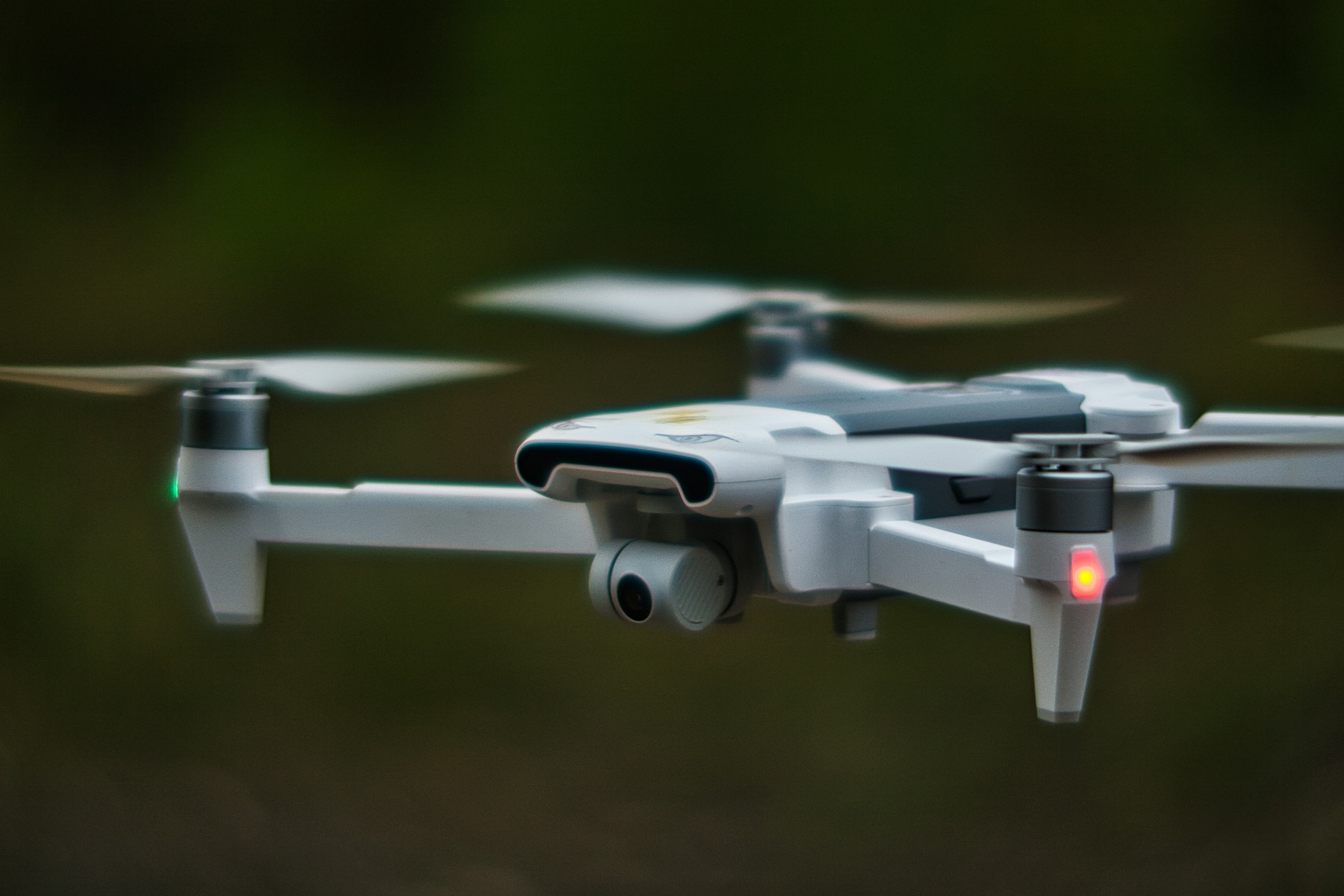
Why the UK Could Be the World’s Next UAV Jobs Hub
Unmanned Aerial Vehicles (UAVs), also known as drones, are transforming the way we survey landscapes, inspect infrastructure, deliver goods, monitor the environment, assist emergency services, and even engage in filmmaking. Their increasing adoption has opened up a wide variety of technical, regulatory, operation, and creative roles.
In the UK, the UAV sector is growing rapidly. From regulatory advancements to commercial adoption, the environment is becoming more favourable for UAV innovation. Universities are expanding research, companies are developing novel UAV systems, and government initiatives are supporting testing and deployment. For professionals interested in flying, engineering, data analysis, software, or operations, the UAV field offers exciting opportunities.
This article explores why the United Kingdom is well positioned to become a global UAV jobs hub, what the current landscape looks like, what roles are in demand, challenges to overcome, and what must happen for the UK to lead in UAV careers.
1. The UK UAV Landscape Today
The UAV / drone industry in the UK has seen strong development across several dimensions:
A growing number of companies—startups, scale-ups, and established aerospace firms—are designing and manufacturing UAV platforms and components, from hardware to software.
There is increasing use of UAVs in sectors such as agriculture, environmental monitoring, infrastructure inspection, surveying, security, logistics, film & media.
UAV regulations have evolved: civil aviation authorities have introduced frameworks for drone certification, remote pilot competency, beyond visual line-of-sight (BVLOS) trials, and safety standards.
Public sector and local authorities are commissioning UAV-based services—inspection of bridges, power lines, coastal monitoring, emergency response, flood mapping.
Research institutions are deeply involved in exploratory and applied work on autonomy, drone swarms, AI for perception, battery and propulsion improvements, and airspace / traffic management.
This establishes both demand and momentum in the UK UAV sector, creating many roles spanning technical, operational, regulatory, and managerial areas.
2. Why the UK Is Well Placed to Lead in UAV Jobs
Several strengths give the UK competitive advantage in becoming a UAV careers leader:
Regulatory progress and testing infrastructure: The UK has active drone licensing, pilot competency regimes, sandbox trials for advanced operations, and designated airspace for UAV testing. This regulatory clarity helps firms and professionals operate more confidently.
Strong academic and research base: Universities and research labs are doing advanced work in autonomy, sensors, robotics, AI, materials, and energy systems that reinforce UAV innovation and talent pipelines.
Industry diversity: The UAV market is being driven not only by defence and aerospace but by agriculture, energy, logistics, media, and civil engineering, widening opportunities for different skills.
Government interest and funding: Public funding and strategic initiatives focus on Future Flight, autonomous systems, clean tech, and smart infrastructure; UAVs often form part of these programmes.
Global connectivity and supply chain presence: The UK has firms engaged in UAV component supply, software, systems integration, and services, making it part of a larger international ecosystem.
Talent pool and education: Engineers, pilots, software developers, data scientists, regulatory specialists, and operations managers are increasingly developing UAV-specific expertise through university courses, specialisations, and job experiences.
These factors form the foundation for the UK to attract investment, create jobs, and lead in UAV innovation.
3. Government Policy, Regulation & National Strategy
Policy, regulation, and national planning are major drivers for UAV job growth in the UK:
Licensing regulations for pilots and remote pilots are being standardised. Competency schemes and required certifications are making roles clearer for prospective professionals.
Trials and sandbox environments for BVLOS flights, drone corridors, and approved airspace support real-world deployment and innovation.
Government research funding supports UAV tech in environmental monitoring, defence, transport, delivery, inspection, and disaster response.
National innovation and industrial strategies often include UAV / unmanned systems as a component of autonomous mobility, robotics, and clean technology.
Regulatory consideration for safety, privacy, and noise, as well as air traffic integration, are becoming more mature, easing barriers to scaling UAV operations.
Such regulatory and policy clarity helps reduce risk for employers and professionals, enabling firms to invest in UAV teams and infrastructure.
4. Education, Talent Pipeline & Skills Development
To scale the UAV industry, a strong talent pipeline is essential:
Universities offering degrees in robotics, aerospace engineering, mechatronics, computer vision, AI, embedded systems, and software engineering help build core technical skills.
Short courses and certifications for drone pilots, remote pilot competency, safety regulations, payload operation, and maintenance are increasingly available.
Apprenticeships, internships and placement schemes provide hands-on experience with UAV flight testing, sensor integration, mission planning, and regulatory compliance.
Cross disciplinary skills—combining hardware, software, data analytics, controls, autonomy, safety, and regulation—are highly valuable.
Practical exposure to payloads, sensor fusion, image processing, navigation, flight control and battery / propulsion systems helps professionals differentiate themselves.
Expanding these educational pathways and experiential learning options is key to supply enough qualified aerial systems professionals.
5. Infrastructure, Innovation Ecosystems & Leading Organisations
A thriving UAV ecosystem in the UK requires solid infrastructure and institutions:
Testing ranges, airspace corridors, dronesafe regulatory bodies, and certified pilot training centres are essential for safe operations and professional training.
Shared labs and research centres where universities and industry collaborate; where autonomous navigation, swarming, and out-of-visual-line operations are trialled.
UAV manufacturers and integrators who produce airframes, propulsion systems, sensors, imaging systems, control electronics, software stacks and associated maintenance / servicing.
Companies that specialise in UAV data processing—image analysis, mapping, photogrammetry, GIS, machine learning for perception.
Service providers in inspection, agriculture, logistics, health mapping, environmental monitoring, which deploy UAVs operationally, creating roles beyond engineering (pilots / operations / planning / maintenance).
Compliance, safety, and regulation consultancies—ensuring that UAV systems meet legal, environmental, and safety standards.
These building blocks produce a meaningful range of roles, from entry-level to specialised senior positions.
6. Sector-Specific Demand for UAV Jobs
Different application domains are generating growing demand:
Inspection & Infrastructure: Bridges, pipelines, towers, power lines, wind turbines, railways all require UAVs with imaging/sensor payloads, remote pilots, safety specialists.
Surveying & Mapping: Geospatial analysts, photogrammetry experts, remote sensing, terrain and environmental surveys using UAVs.
Agriculture & Environmental Monitoring: Crop monitoring, precision farming, wildlife, forestry, climate research, environmental enforcement.
Delivery & Logistics: Pilot projects for medical supplies, last-mile deliveries, package delivery by drones.
Emergency Services & Public Safety: Search & rescue, disaster management, aerial surveillance, fire monitoring, flood assessment.
Media, Film & Advertising: Aerial cinematography, creative photography, live event filming, drone-based content.
Research & Development: Autonomous systems, drone swarms, AI perception, battery life enhancements, lightweight materials, novel propulsion.
Defence & Security: UAV platforms for reconnaissance, counter-drone technologies, secure communications, unmanned combat or surveillance vehicles.
Because UAVs can be applied so broadly, job growth comes from many sectors, each contributing different role types.
7. Job Roles & Career Pathways in UAVs
Here are common roles in UAV and what career paths look like:
Remote / UAV Pilot: Licensed pilot for commercial UAV operations, inspection, surveying, deliveries.
Flight Control / Autopilot Software Engineer: Develops autopilot systems, flight controllers, mission planning, navigation algorithms.
Payload Specialist / Sensor Engineer: Designs, integrates, and tests sensors—cameras, LiDAR, multispectral, thermal—for UAV platforms.
Mechanical / Airframe Engineer: Structural design, materials, weight optimisation, aerodynamics, propulsion integration.
Systems Integration Engineer: Brings together hardware, software, sensors, communications, and ensures reliability and safety.
Operations Manager / UAV Fleet Manager: Oversees fleet maintenance, scheduling, regulatory compliance, and daily operations.
Regulatory / Safety Specialist: Ensures operations comply with CAA and other safety / privacy / environmental regulations; prepares safety documentation, risk assessments.
Data Analyst / GIS / Remote Sensing Specialist: Processes aerial data, converts it into actionable maps, modelling, insights for clients.
AI / Computer Vision Engineer: Works on perception, object detection, image processing, navigation, scene understanding for UAVs.
Project Manager / Commercial Roles: Manages UAV projects from conception to deployment; business development, client liaison, cost estimation, product roadmap.
Career paths often lead from technical execution (piloting, engineering) to senior technical specialism, then into architectural, operational leadership, or product / business leadership roles.
8. Regional UAV Hubs Across the UK
UAV job opportunity is distributed across various regions, not just centred in London:
Southern England (Oxford, Southampton, Farnborough) has clusters of aerospace, drone software, sensor, avionics and software engineering firms.
Midlands and Northern England (Manchester, Leeds, Liverpool) are growing in surveying, agriculture, and industrial UAV fleet operations.
Scotland (Edinburgh, Glasgow) has university research centres and enterprises working on autonomy, robotics and mapping.
Wales, South West and South East regions host manufacturing, inspection, and film media use-cases.
Coastal and remote areas are growing for environmental monitoring, offshore power, wind farm inspection and related UAV operations.
Remote roles and hybrid / field work often spread work across regions, enabling professionals to live outside traditional tech hubs.
This geographical spread helps widen access and reduce dependency on a single location.
9. Challenges & Risks to Overcome
There are several obstacles to the UK becoming a leading UAV jobs hub:
Regulatory complexity: Certification, airspace integration, privacy, safety, environmental impact regulations are often complex, evolving, and costly.
Skill shortages: Need for multi-disciplinary skills spanning piloting, electronics, software, sensors, autonomy, data processing; many roles are hard to fill.
Technology maturity: Some UAV technologies and capabilities (battery life, endurance, robustness in varied weather, autonomous navigation) are still maturing, slowing deployment and job growth.
Operational costs: Maintenance, training, insurance, regulatory compliance, and safety costs are significant for commercial operators.
Public perception and social licence: Privacy, noise, safety concerns can limit UAV operations and create regulatory delays.
Infrastructure constraints: Need for drone test ranges, designated airspace, charging / maintenance infrastructure, robust connectivity, and ground control.
Safety and risk management: Accident margins, environmental risks, failing sensors, or flight controller faults can lead to serious consequences.
Overcoming these challenges will require coordinated efforts among regulators, industry, education, and public engagement.
10. Global Competition: UK vs US, EU, and Asia
UK competes with international UAV clusters, and while competition is strong, the UK has unique advantages:
United States: Large investment, scale, commercial drone trials, logistics and delivery pilots, strong private sector emphasis.
European Union: Countries like Germany, France, Netherlands, and Sweden have strong aerospace backbones, regulatory clarity, and large drone adoption especially in agriculture, surveying, transportation.
Asia: China, Japan, South Korea, India are heavily investing in drone delivery, surveillance, infrastructure inspection, urban air mobility, and manufacturing.
The UK must differentiate by emphasising safety, regulatory leadership, agility in trials, public trust, and combining UAV work with strong academia and research capabilities.
11. Salary Trends & Job Market Insights
UAV roles can offer quite competitive salaries and career rewards:
Entry-level pilot / field technician roles often start around £25,000-£40,000, depending on region and experience.
Engineers and specialists (e.g. sensor integration, flight control, software, payloads) can expect £45,000-£75,000 depending on seniority and skills.
Senior roles, such as systems architects, fleet managers, or regulatory / safety leads, may reach £80,000-£120,000+ in high-demand regions or firms.
Consultancy, contract, or pilot mission-based roles may earn higher day rates, particularly if requiring specialist flight conditions or complex regulatory compliance.
Bonuses and benefits often include travel, technical training, pilot certification funding, remote / field work allowances.
Overall compensation reflects the mix of technical skills, risk, certification requirement, and responsibility.
12. What Must Happen for the UK to Win
To solidify its position as a global UAV jobs hub, the UK should focus on:
Streamlining regulation and certification – Clear frameworks for drone operations, pilot training, BVLOS, remote pilot licensing.
Expanding education and certification pathways – More courses, field training, apprenticeships, short-courses in UAV tech, autonomy, and regulation.
Investing in test ranges and infrastructure – Designated airspace, droneports, approved flight zones, charging / maintenance facilities.
Supporting R&D, autonomy, AI, and sensor innovation – Collaborative innovation for autonomy, navigation, payloads, battery tech, and sensor fusion.
Encouraging industry-academia partnerships – To feed research into real world deployment and ensure talent matches industry needs.
Facilitating access to capital for startups and scale-ups – Early-stage firms in the UAV space need support to move prototypes to commercial deployment.
Promoting public awareness and trust – Transparency in safety, privacy, environmental impact to secure social licence.
Fostering regional development – Create UAV clusters across UK regions to spread opportunity, jobs and innovation outside the capital.
13. Conclusion
The United Kingdom is well-positioned to emerge as a leading global UAV jobs hub. With regulatory progress, growing commercial adoption, strong research & innovation, and a diversifying industry, the opportunities are substantial.
For individuals—pilots, engineers, regulatory specialists, data scientists, operations experts—UAVs represent one of the most dynamic and future-oriented fields today. For the UK, successfully addressing the challenges and investing in abilities, infrastructure, and trust can lead to thousands of rewarding and impactful careers.
The sky is literally not the limit in UAV technology, and with focused action the UK could come to lead the world in unmanned aerial systems employment.


